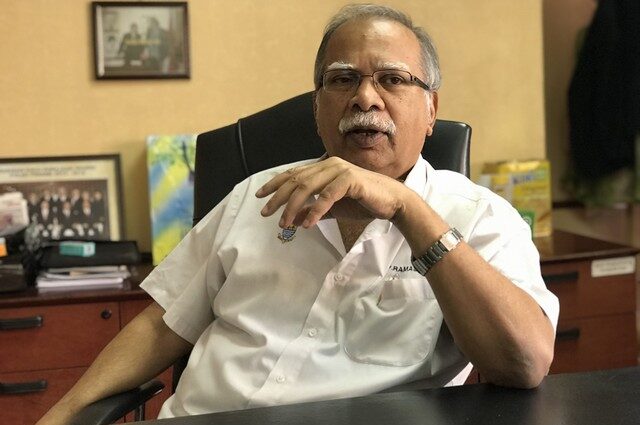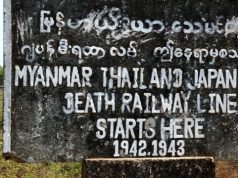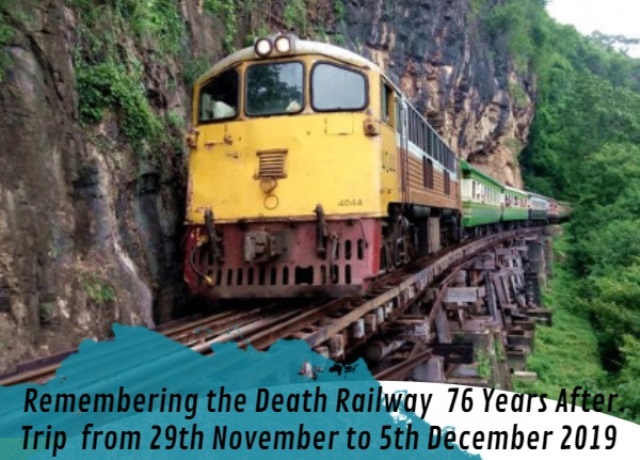

On the 16th of October 1943, the Siam-Burma Railway was completed for which more than 100,000 Malaysians sacrificed their lives. Many escaped death and returned to Malaysia and died in Malaysia due to old age and natural deaths.
“There are a handful of survivors still among us and we are constantly keeping in touch with them, recording their memories and vivid incidents for the sake of history and posterity. Most of them who died were Indians. We, as an NGO keep working hard collecting information and materials about the Siam-Burma Death Railway as we have many families who lost their loved ones, mostly males, in the pursuit of the Japanese to construct a railway line connecting Thailand and Burma (now known as Myanmar) to military purposes” says Chandrasegaran the Coordinator for the Death Railway Interest group (DRIG), which is a small group of persons pursuing this issue for the sake of History.
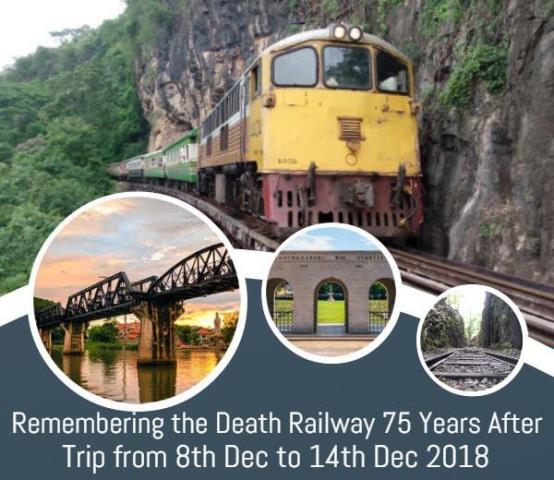

Due to overwhelming response and several requests, DRIG is organizing another trip this year to the historic locations connected to Siam-Burma death railway. This tour which is the 4th to be organised by DRIG will begin on the 29th of November 2019 will take about a week in Thailand with a day trip to Bangkok if the time-schedule permits. Those interested are required to take note that this is not a usual Thailand tour but a travel to specific historic locations connected to World War 2 and the Siam-Burma Death Railway. The whole journey would be conducted through train and road rides.
Those interested can contact Mr Chandrasekaran at the following mobile number:
+6017-8887221
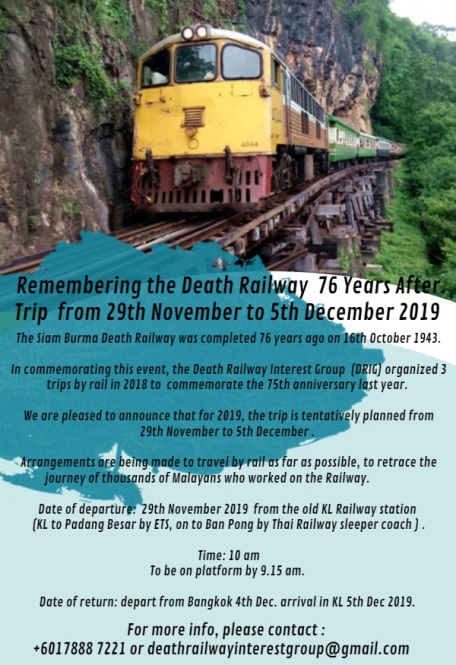

As to the Siam-Burma railway, Chandrasekaran further noted that their group is constantly engaging with the government authorities to recognize the incident as historic national significance so that the sacrifices of our forefathers in shaping this nation would be remembered forever.


“In view of Malaysia being the closest neighbour and the largest contributor of manpower and machinery for the construction of the Death Railway that cost the lives of over 100,000 people from Malaya, we have an obligation to take the lead to initiate efforts to ensure that the Asian victims of the Death Railway will get their place in history. Towards this end, the Death Railway Interest Group will continue with discussions with stakeholders in Thailand during the upcoming trip to the Death Railway on 29th November 2019” Chandrasekaran noted in his statement released in conjunction with the 76th Anniversary completion of the Siam-Burma Railway.
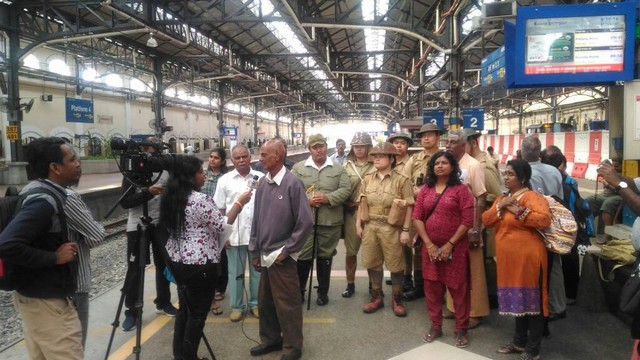

It is also estimated that more than 250,000 forced labourers from Asian countries were used in constructing this mammoth project. Thousands of prisoners of war were also used in this project. They were kept as slaves and were given minimum food and medical facilities. Many died due to diseases like dysentery and malaria and malnutrition. “They died like flies” one survivor once reminisced.
The construction of the 420-kilometre railway was between Ban Pong in Thailand and Thanbyuzayat in Burma. A memorial sits next to the railway lines at Hellfire Pass, cutting on the Thai-Burma Railway, Thailand.




